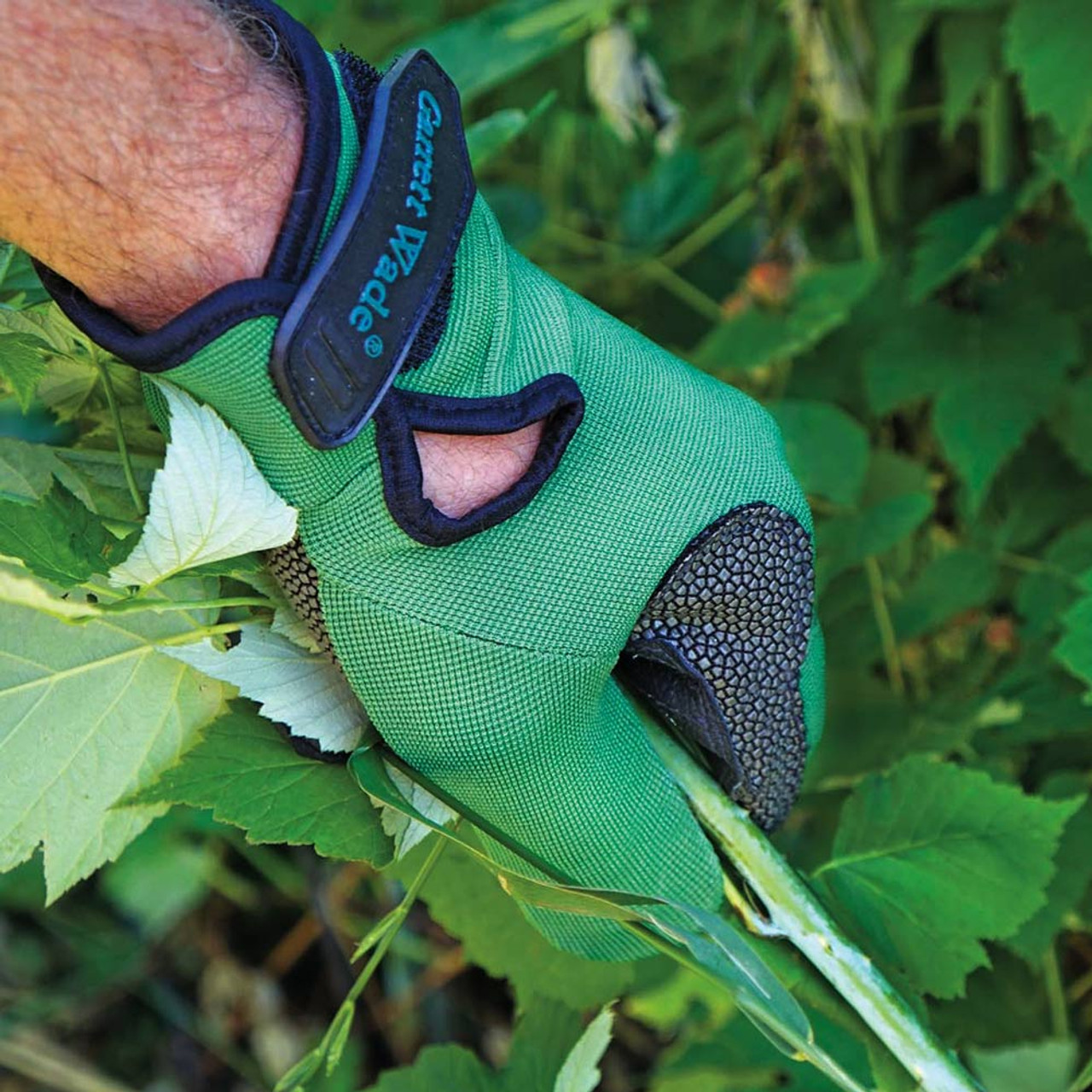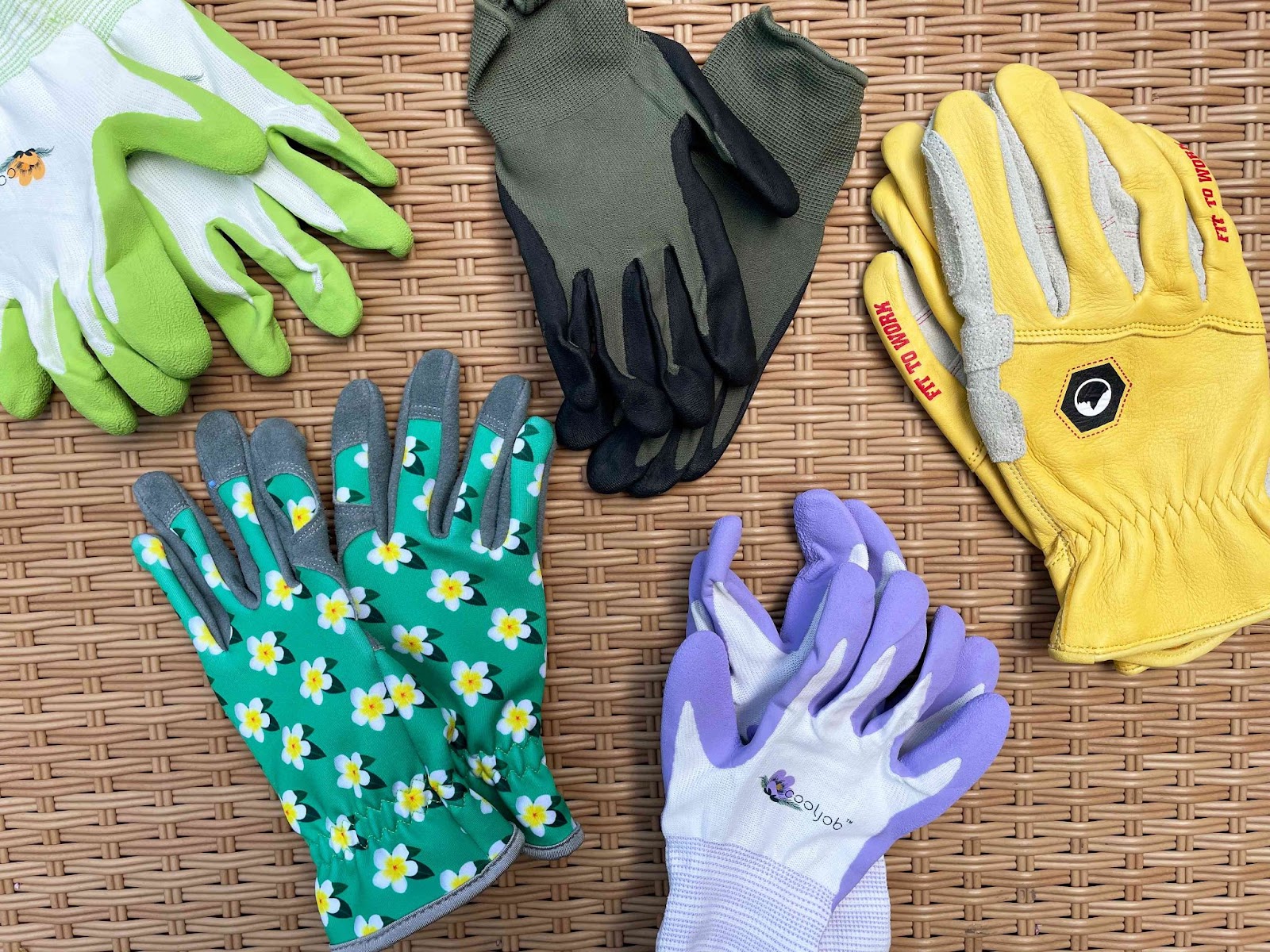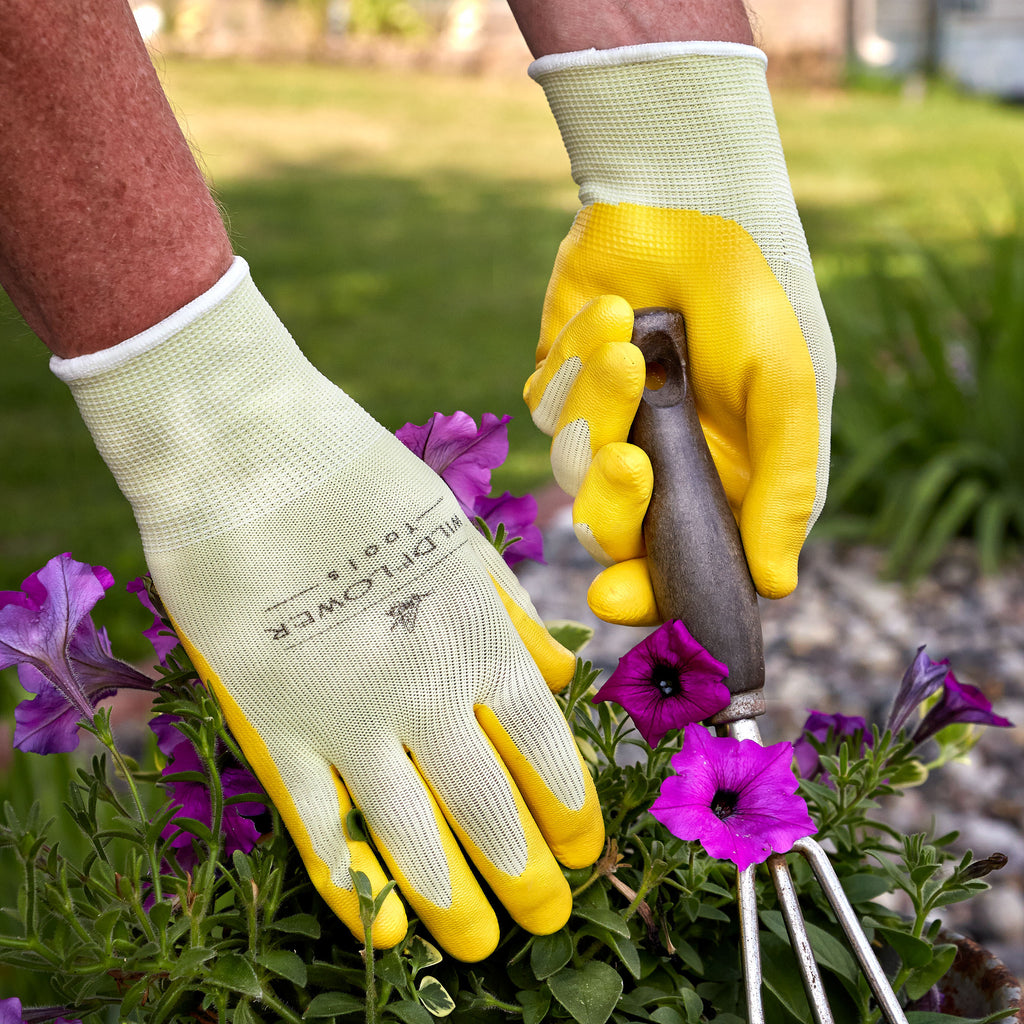Gardening gloves are not merely accessories; they are essential tools that form a protective barrier between a gardener’s hands and the various elements encountered in the garden.
Whether you are planting delicate seedlings, pruning thorny roses, or digging in the soil, the right pair of gardening gloves can make a significant difference in the comfort, safety, and overall enjoyment of your gardening experience.
While many gardeners relish getting their hands dirty, danger can occasionally lurk in the ground. (Consider organisms and animal feces, in addition to poison ivy and other unwanted flora.) Wearing garden gloves not only keeps your hands cleaner but also shields you from thorns, brambles, and irritating plants.
When garden goods go on sale in September and October, it’s a good idea to keep an eye out for the best gardening gloves, which offer a snug, comfortable fit and plenty of room to perform all of your gardening activities.
A good pair of gloves is the first gardening tool you grab when you step outside to work in your yard or garden. But wearing gardening gloves doesn’t have to mean sacrificing elegance or comfort. The creator and owner of Bespoke Garden Plans, Carmen Johnston, says,
Now, I love pretty painted fingernails, and people always want to know how I can keep mine clean when I dig in the dirt all day long. My secret is to put on a pair of clear disposable latex gloves underneath the Digz [Nitrile Dipped] gloves!”
Carmen Johnston (Creator and owner of Bespoke Garden Plans)
Material Selection
Leather Gloves
One of the most popular choices for gardening gloves is leather. Leather gloves are valued for their exceptional durability and natural resistance to thorns and sharp objects. The thickness of the leather determines the level of protection, with thicker varieties offering enhanced defense against abrasions and punctures. Additionally, leather gloves tend to mold to the shape of the hand over time, providing a comfortable and customized fit.
Latex and Rubber Gloves
Latex and rubber gloves are preferred for their flexibility and water-resistant properties. These gloves are often lightweight, making them suitable for tasks that require nimble finger movements. The water-resistant nature of latex and rubber gloves ensures that hands remain dry in wet conditions, offering an added layer of comfort during various gardening activities.
Synthetic Fabrics
Gardening gloves made from synthetic fabrics like nylon or polyester are known for their breathability and flexibility. These materials are often combined with coatings such as nitrile for improved grip and protection. Synthetic gloves are lightweight and well-suited for tasks that demand precision and dexterity, such as planting seeds or handling delicate plants.
Combination Gloves
Many gardening gloves on the market combine different materials to leverage the strengths of each. For instance, a glove might feature a leather palm for thorn resistance and a breathable synthetic back for comfort. These hybrid designs aim to provide a well-rounded solution that addresses various needs in the garden.
Construction Features
To enhance the longevity of gardening gloves and provide extra protection in high-stress areas, manufacturers often reinforce fingertips and palms. These reinforced sections are particularly beneficial when handling tools, as they guard against wear and tear caused by repeated use and friction.
Comfort is a critical factor in gardening, especially during extended periods of use. Many gardening gloves incorporate design features for improved ventilation and breathability. This may include mesh panels, perforations, or open-back designs that allow air circulation, preventing hands from becoming overly sweaty and uncomfortable.
The fit of gardening gloves is crucial for both comfort and functionality. Adjustable closures, such as Velcro straps or elastic wristbands, ensure a secure and customized fit. This not only prevents gloves from slipping off during use but also helps keep out debris and dirt.
In our technology-driven age, some gardening gloves are designed with touchscreen-compatible fingertips. This feature allows gardeners to use smartphones or tablets without having to remove their gloves, adding convenience to the gardening experience.
 Protection from Thorns and Abrasions
Protection from Thorns and Abrasions
Protecting hands from thorns is a primary function of gardening gloves. Leather gloves, with their natural toughness, are excellent choices for resisting thorns. Some gloves have additional padding or layers in areas prone to thorn contact, ensuring that even the most formidable spines are unable to pierce through.
Gardening activities often involve handling rough materials, digging in the soil, or moving heavy objects. Gloves constructed with abrasion-resistant materials, such as reinforced synthetic fabrics, provide an effective barrier against rough surfaces. This is especially crucial for maintaining the integrity of the gloves over time.
For tasks involving pruning or cutting, gloves with reinforced fingertips offer targeted protection. These gloves are designed to withstand the repeated pressure and friction encountered when using pruning shears or other cutting tools. The reinforced areas prevent wear and tear, ensuring that the gloves remain effective during precision tasks.
Comfort and Fit
Comfort is paramount when it comes to gardening gloves. Hours spent in the garden can lead to sweaty hands and discomfort if the gloves lack proper ventilation. Look for gloves with a breathable design that allows air circulation, preventing excessive sweating and promoting comfort during extended use.
The fit of gardening gloves is equally important. Gloves that are too tight can restrict movement and cause discomfort, while those that are too loose may compromise dexterity and increase the risk of accidents. Choose gloves that provide a snug yet comfortable fit, ensuring that you can maneuver your fingers with ease while maintaining the necessary protection.
Grip and Control
Maintaining a secure grip on tools and plants is crucial for efficient gardening. Many gardening gloves feature textured palms or fingers to enhance grip, preventing tools from slipping out of your hands. Whether you’re wielding a pruner, trowel, or watering can, the right gloves contribute to a confident and controlled grip.
The grip is particularly important when dealing with slippery or wet conditions in the garden. Water-resistant gloves or those with specialized coatings can prevent slippage, allowing you to work with confidence even in damp environments.
What kind of gardening gloves do I need?
Selecting the right gardening gloves depends on the specific tasks you plan to undertake. For heavy-duty activities such as pruning thorny bushes or handling rough materials, leather gloves are an excellent choice.
If you’ll be working in wet conditions, opt for water-resistant gloves made from latex or rubber. Lightweight and breathable gloves are ideal for tasks like planting and weeding in warmer weather.
Consider the overall design of the gloves, including wrist closures and the length of the cuffs. Longer cuffs provide added protection for the wrists and forearms, especially when dealing with thorny plants or brush.
Maintenance and Longevity
Proper maintenance is key to ensuring the longevity and effectiveness of gardening gloves. Regularly clean the gloves to remove dirt, plant sap, and other residues that can accumulate during use. Follow the care instructions provided by the manufacturer to preserve the integrity of the gloves.
Inspect gloves for any signs of wear or damage, such as frayed seams or holes. Address minor issues promptly, and replace gloves that are significantly worn or damaged. Well-maintained gloves not only provide consistent protection but also contribute to a positive gardening experience.
Specialized Gloves for Specific Tasks
In addition to general-purpose gardening gloves, there are specialized gloves designed for specific tasks. For example:
- Rose Gloves – These gloves are equipped with extra protection around the fingertips and are often made from leather. They are designed to shield hands from thorns while tending to rose bushes.
- Nitrile Coated Gloves – Featuring a thin layer of nitrile coating on the palms and fingers, these gloves offer enhanced grip and are suitable for tasks that require precision and control.
- Garden Gauntlets – With extended cuffs, garden gauntlets provide added protection for the wrists and forearms. They are ideal for tasks involving thorny plants and dense foliage.
- Pruning Gloves – Tailored for pruning activities, these gloves often have reinforced fingertips and a flexible design that allows for intricate movements while protecting against thorns and sharp edges.
 Multi-Seasonal Considerations
Multi-Seasonal Considerations
Gardening is a year-round activity, and the conditions in your garden can vary greatly from season to season. Consider the changing weather when selecting gardening gloves.
- Winter Gloves – Insulated and waterproof gloves are essential for winter gardening. They keep hands warm and dry, allowing you to continue your gardening activities even in cold and wet conditions.
- Summer Gloves – Lightweight and breathable gloves are ideal for summer gardening. They provide protection without causing hands to overheat during warmer temperatures.
Gardening gloves FAQs
What are the best materials for gardening gloves?
The best materials for gardening gloves depend on the tasks at hand. Leather gloves offer durability and protection against thorns, while latex and rubber gloves provide flexibility and water resistance. Choose the material that suits your specific gardening needs.
What is the use for gardening gloves?
Although they are not necessary, gardening gloves can shield your hands from sharp objects like thorns and splinters, blisters, and dirt that get under your nails and on your fingers. Gloves also prevent your skin from drying out from the dirt.
How do I maintain and clean my gardening gloves?
To maintain gardening gloves, regularly clean them to remove dirt and residues. Follow the care instructions provided by the manufacturer. Inspect for wear or damage, address minor issues promptly, and replace significantly worn or damaged gloves for optimal performance.
What type of gloves are suitable for winter gardening?
Winter gardening requires insulated and waterproof gloves to keep hands warm and dry. These gloves are essential for protecting against the cold and wet conditions often experienced during winter months in the garden.
How do I choose the right size of gardening gloves?
Choosing the right size of gardening gloves is crucial for comfort and effectiveness. Measure your hand circumference and refer to the manufacturer’s sizing chart. Ensure a snug yet comfortable fit to maintain dexterity while working in the garden.
Conclusion
Gardening gloves are indispensable tools that offer a crucial layer of protection for your hands during various gardening activities. From shielding against thorns and abrasions to providing comfort, grip, and control, the right pair of gloves can significantly enhance your gardening experience. Choose gloves based on the specific tasks you undertake, ensure a comfortable fit, and prioritize maintenance for long-lasting and effective hand protection. With the right gloves, you can cultivate your garden with confidence, knowing that your hands are well-protected and ready for the joys of nurturing your plants.

